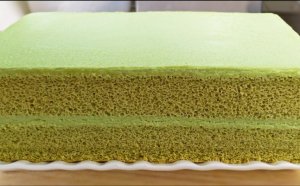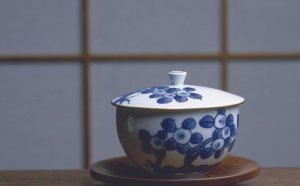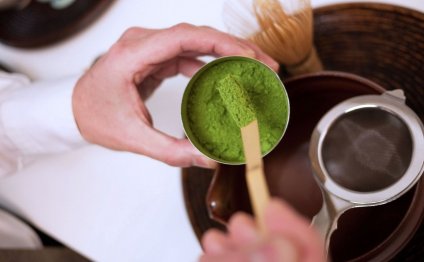
How to make green tea powder?
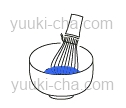 FULL BREWING INSTRUCTIONS FOR MAKING ONE BOWL OF MATCHA GREEN TEA!
FULL BREWING INSTRUCTIONS FOR MAKING ONE BOWL OF MATCHA GREEN TEA!
What you need to make matcha...
Important Note...
If you try to use western utensils to prepare matcha, it most likely won't turn out well. We strongly advice you to obtain and use the traditional Japanese matcha utensils outlined above as they will enrich your matcha experience and increase your chances of making the perfect bowl of matcha.
Brewing Suggestion...
Our brewing suggestions for preparing both usucha (thin matcha) and koicha (thick matcha) are shown below. Please note, you can't make koicha matcha from an usucha matcha, so please make sure you know which type of matcha you have before preparing it. In addition, there are other slightly different variations of preparing usucha and koicha that you may have learnt and enjoy using. If so, please feel free to use that method instead.
| STEP 1: | |
|
Preheat the matcha bowl by filling it about 1/3 full with hot water. Then place the whisk facing down into the hot water to wet the tips of the prongs (not the whole whisk!). Once the bowl has thoroughly preheated, empty out the water and dry the bowl out preferably with a cloth such as a chakin. Set the whisk aside and then measure out 70ml/2.3oz for Usucha, or 40ml/1.3oz for Koicha of hot water into a measuring cup and leave it to cool. |
|
| STEP 2: | |
|
Use the bamboo scoop to measure the matcha powder, about 2 scoops for Usucha, or 3-4 scoops for Koicha, and place it into the bowl. Note, sifting the matcha prior to measuring out the matcha is highly advisable to remove any clumps of powder. |
|
| STEP 3: | |
|
Once the water that was measured out in STEP 1 drops to 70°C(158°F)-80°C(176°F) pour it into the matcha bowl. |
|
| STEP 4: | |
| Take the whisk in one hand and hold the rim of the matcha bowl with your other hand. For Usucha, whisk the matcha briskly in a W motion using your wrist (not arm) until the matcha has a thick froth with many tiny bubbles on the surface. For Koicha, the idea is NOT to make a frothy consistency with a fast whisking action like usucha. Instead, a slower kneading action from left to right, up and down, and a gentle 360 degree rotating action as shown in the image (to the left) can be used to make a thick consistency. The resulting tea should be reasonably thick, smooth and without froth. | |
Usucha & Koicha Preparation Differences...
| Usucha (thin matcha) | Koicha (thick matcha) | |
| Number Of Scoops | 3-4 | |
| Water Volume | Approx. 70ml | Approx. 40ml |
| Water Temperature | 70°C(158°F)-80°C(176°F) | |
| Type of Whisk | 50-120 thin pronged | 32-48 thick pronged |
| Whisking Action | Rapid "w" action | Kneading/rotating |
| Consistency | Thin with froth | Thick with no froth |
Commom Preparation Problems...
The matcha was extremely bitter...
You either used water that was too hot, too much matcha, or the matcha was not whisked efficiently. Matcha needs to be whisked until a thick froth with many tiny bubbles has been achieved. If there are breaks in the froth that reveals the liquid underneath, or big bubbles visible on the surface, the flavor profile of the matcha will be poor compared with one that has been whisked correctly.
The matcha doesn't froth very well...
This can be due to not whisking the matcha thoroughly, but is more often than not due to not using enough powder and/or using too much water. If that is the case, you'll need to either increase the powder amount or decrease the water amount. Please note, that when preparing koicha (thick matcha) the matcha should be prepared without froth.
There are clumps of powder in the prepared matcha, and/or I get clumps of matcha in my mouth when drinking...
This occurs simply because the matcha wasn't sifted. If you sift the matcha that seldom happens.
General Matcha FAQ...
What is matcha?
Matcha, the Japanese tea ceremony beverage, is a powdered green tea which entails a high price mainly as a result of the labor involved in producing it. In Japan, high quality matcha is always expensive and there really isn't any chance of finding a high quality matcha at a low price. It is important to know that there are many grades of matcha from ceremonial grades to food grades. Food grades, also known as ingredient matcha, is used in baking and cooking or as an ingredient in such things as smoothies, and face masks etc. They're often sold off in bulk, very cheap, and quite often NOT matcha, but powdered sencha.
How is matcha produced?
Matcha is produced in the same way as gyokuro (another type of Japanese green tea). The tea plants are covered under shade for as little as 3 weeks to as much as 2 months prior to harvesting the leaves. The length of shading time is very much dependent on various aspects including such things as the quality of matcha which is being grown and weather conditions. Higher quality matcha and tea gardens that produce matcha from handpicked leaves are, on average, shaded for 4 weeks or more. The harvested leaves are then steamed the same as other Japanese green tea, but are not rolled. Instead, they are dried and then all stems, twigs and leaf veins are removed by machinery and the resulting leaves left over are known as tencha. The tencha is then stone-ground and the resulting powder is known as matcha.
Could you explain the two different tea ceremony matcha types usucha and koicha?
In Japan, there are two types of matcha served in Japanese tea ceremony. They are usucha (thin matcha) and koicha (thick matcha). Usucha is the more common of the two and is served in every tea ceremony. It is made from the buds and leaves of the finest young tea plants and is usually machine harvested. Koicha has a more complex taste and thicker consistency and is produced from the buds of older tea plants, is usually handpicked, and is very expensive!
How much matcha per day do you recommend?
Most people who consume matcha on a daily basis drink 1-2 servings a day. If you are new to matcha it is best to start by consuming 1 serving a day. There is no known matcha overdose!
Does matcha have caffeine?
Matcha has a relatively high caffeine content, however the impact of caffeine found in matcha is quite different from that found in other drinks such as coffee. Coffee caffeine tends to be absorded very quickly into the body which is why coffee caffeine is well known for its quick energy spikes. On the other hand, matcha caffeine is absorbed much slower into the body (6-8 hours) and gives a slower release of energy. Therefore, matcha caffeine is not associated with the well known negative side effects that coffee caffeine is associated with.
RELATED VIDEO
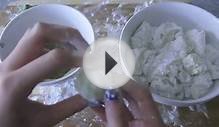

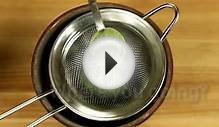
Share this Post
Related posts
Where to Buy green tea powder?
Matcha is a traditional Japanese green tea powder produced by stone-milling a shade-grown green tea called tencha into a…
Read MoreStarbucks green tea powder
One evening after dinner out and a movie, my husband and I had some time to fill before the babysitter expected us home so…
Read More
 Gunpowder tea (珠茶; pinyin: zhū chá) is a form of green Chinese tea produced in Zhejiang Province of China in which each leaf has been rolled into a small round pellet. It is believed to take its English name from the fact that the tea resembles blackpowder grains...
Gunpowder tea (珠茶; pinyin: zhū chá) is a form of green Chinese tea produced in Zhejiang Province of China in which each leaf has been rolled into a small round pellet. It is believed to take its English name from the fact that the tea resembles blackpowder grains...
